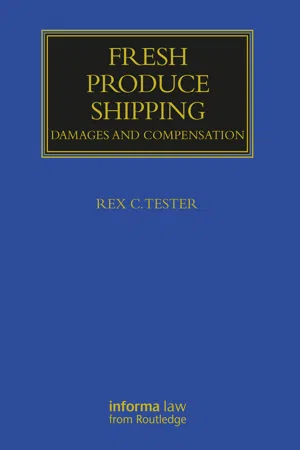Air
1.14 On rare occasions, your driver may have detected a problem when collecting from the airport.
1.15 However, there is often significant resistance by the airline’s warehousemen to allow your driver to give a claused signature, and your driver knows he cannot protest without the possibility of being subjected to significant aggravation and threats of being offloaded back into the warehouse when he is under orders to get the consignment back to your pack-house as quickly as he can.
1.16 There are numerous anecdotal stories of physical threats to drivers protesting too strongly, and since your driver knows he will have to return for subsequent collections, it is not in his (and, hence, your) interest for him to pursue his discontent too strongly.
1.17 The immediate and most important task is for you to send a notice of claim to the airline with the absolute minimum delay: you must provide reasonable details to enable them to identify the consignment and be aware of the type of damage involved.
1.18 You may call up the airline’s cargo office advising of the damage, and you will almost invariably be told to simply send in a claim notice, because much of the time you will not be able to speak to anyone who has expertise in the field of claims.
1.19 It is vital that you extend an invitation to the airline to inspect the cargo for itself; it is highly unlikely to take the opportunity to do so but having declined or ignored the invitation means that they are not in a strong position to challenge your own surveyor’s report, and/or your quality control inspection records.
1.20 You are then ‘at your ease’ – relatively speaking – to gather your evidence of the damage, consider what has caused it, calculate your losses, and prepare and submit the claim to the airline.
1.21 In all but the smallest of losses, it is prudent to immediately instruct an independent surveyor to inspect the damage and produce a report – you will have to pay for this, but you can add the cost to your claim, irrespective of whether the airline disputes that you are entitled to do so.
1.22 Whilst the airline will seldom, if ever, instruct its own surveyor you can be sure that the airline’s claims department expects you to produce the survey report as evidence, but despite being given the opportunity to carry out its own survey, it should be no surprise when it disputes the conclusions of your surveyor, despite having not carried out its own.
1.23 Should the matter progress so far as Court, the airline and its advisors will actually know that such challenges are unlikely to be successful unless they can point to a clear and obvious fault in the claimant’s survey report.
1.24 Additionally, it has become more difficult for an airline (or ocean carrier, for that matter) to take this line as a result of a case brought in the English Court.2 However, this is unlikely to stop carriers attempting to dispute the conclusions in a claimant’s survey report.
2 Griffiths -v- TUI UK Limited [2020] EWHC 2268 (QB).
Ocean
1.25 If the container is opened and the problem is immediately obvious, the best thing you can do is close it up, call the carrier, and tell them what has happened and ask them what they would like to do about it.
1.26 Their reaction will normally be that they will instruct a surveyor to inspect the cargo in haste, which must be matched by your instructing a surveyor to act on your behalf.
1.27 The ideal is for the two surveyors to inspect together, so that disputes about the actuality of the damage can be avoided – one hopes also that they can agree on the cause of the damage. However, a joint survey is not always possible.
1.28 If the container can be held until the surveyor or surveyors attend and check it, this will be beneficial since it is possible that the cause of the damage will be promptly discovered as a result of inspection of it and its settings.
1.29 More often it is the case that surveyors are not immediately available, and as a consequence the container cannot be held at your pack-.0house.
1.30 Following departure of the unloaded container from your pack-house, be aware that you cannot expect the carrier to check it out and report back to you as regards any problem – they will be reluctant to disclose that evidence, and only litigation or a credible threat of it will force out the details of whatever inspection they may have done.
